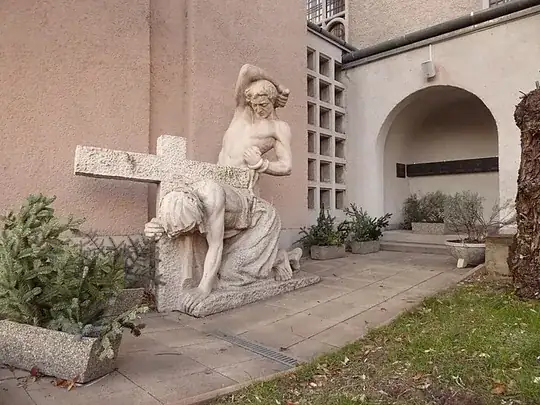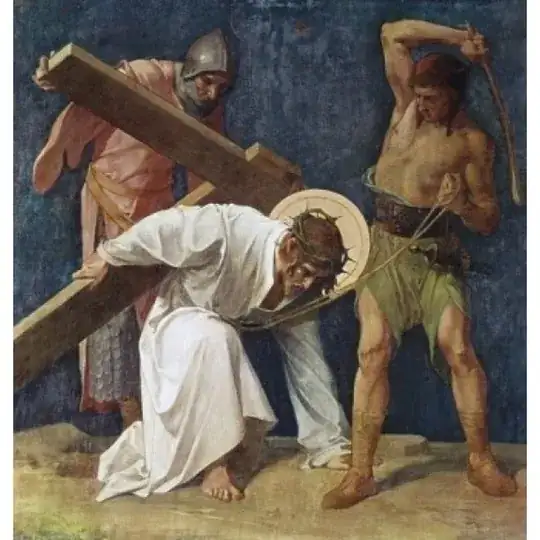Christian iconography question. This is about a 1936 life-sized statue of Jesus Christ fallen beneath the cross, by sculptor Somló Sári. The statue is at Budapest 2. ker. Pasaréti tér, next to the Franciscan roman catholic church of Pasarét dedicated to Saint Anthony of Padua, in a fenced garden next to the bell tower.
The statue depicts another men besides Christ. This second figure is holding what looks like a flail in his right hand, ready to strike Christ. Who is this second figure?
I expect that this question is answerable because Catholic mythology concerning Christ's passion is as detailed as the expanded universe for the original Star Wars movie trilogy. Every character and inanimate item encountered has not only a name, but also a also book-length back story. We know about the two criminals who were on the cross next to Christ, about the soldiers who verified that he's dead, etc. A person who stands next to the fallen Christ with a flail seems significant enough that he must have a definite identity.
(Cross-post from hu.Wikipedia reference desk, where I didn't get an answer.)

